|
|
In ultracold atoms settings, inelastic light scattering is a preeminent technique to reveal static and dynamic properties at nonzero momentum. In this work, we investigate an array of one-dimensional trapped Bose gases, by measuring both the energy and the momentum imparted to the system via light scattering experiments. The measurements are performed in the weak perturbation regime, where these two quantities — the energy and momentum transferred — are expected to be related to the dynamic structure factor of the system. We discuss this relation, with special attention to the role of in-trap dynamics on the transferred momentum. N. Fabbri et al., |
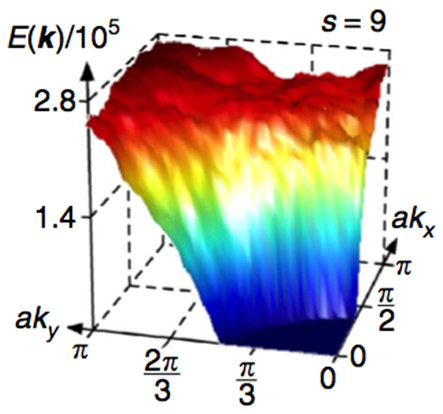 |
Entanglement is a fundamental resource for quantum information processing, occurring naturally in many-body systems at low temperatures. The presence of entanglement and, in particular, its scaling with the size of system partitions underlies the complexity of quantum many-body states. The quantitative estimation of entanglement in many-body systems represents a major challenge, as it requires either full-state tomography, scaling exponentially in the system size, or the assumption of unverified system characteristics such as its Hamiltonian or temperature. Here we adopt recently developed approaches for the determination of rigorous lower entanglement bounds from readily accessible measurements and apply them in an experiment of ultracold interacting bosons in optical lattices of 105 sites. We then study the behaviour of spatial entanglement between the sites when crossing the superfluid-Mott insulator transition and when varying temperature. This constitutes the first rigorous experimental large-scale entanglement quantification in a scalable quantum simulator. M. Cramer et al., |
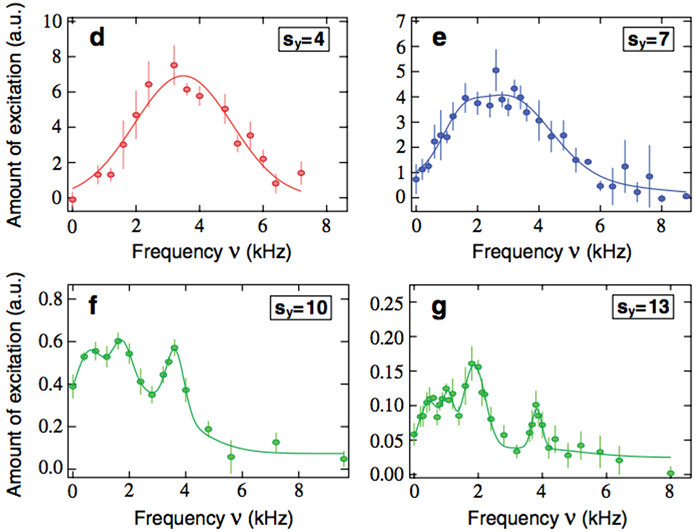 |
We report the Bragg spectroscopy of interacting one-dimensional Bose gases loaded in an optical lattice across the superfluid to the Mott-insulator phase transition. Elementary excitations are created with a nonzero momentum and the response of the correlated 1D gases is in the linear regime. The complexity of the strongly correlated quantum phases is directly displayed in the spectra which exhibit novel features. This work paves the way for a precise characterization of the state of correlated gases in optical lattices. D. Clément et al., See also the Physics Viewpoint by D. Jaksch: D. Jaksch |
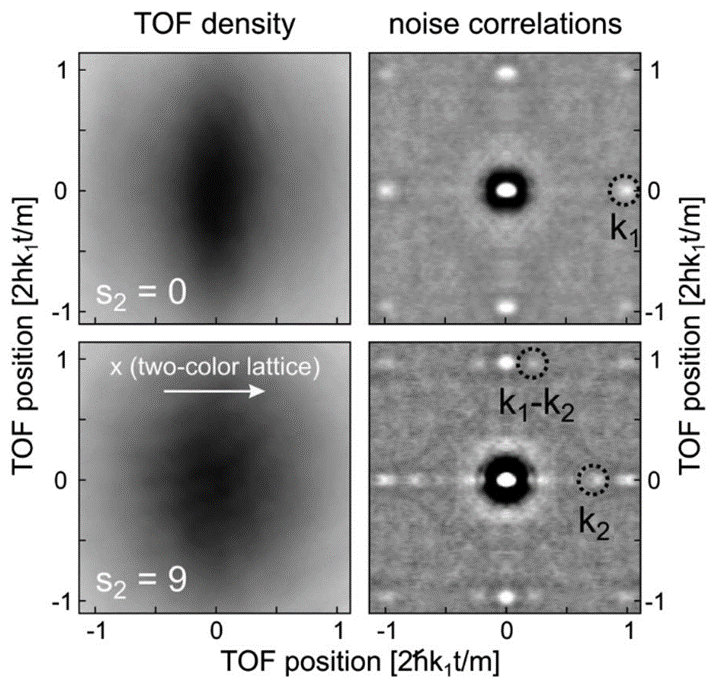 |
We use a two-color lattice to break the homogeneous site occupation of an atomic Mott insulator of bosonic 87Rb. We detect the disruption of the ordered Mott domains via noise correlation analysis of the atomic density distribution after time of flight. The appearance of additional correlation peaks evidences the redistribution of the atoms into a strongly inhomogeneous insulating state, in quantitative agreement with the predictions. V. Guarrera et al. |
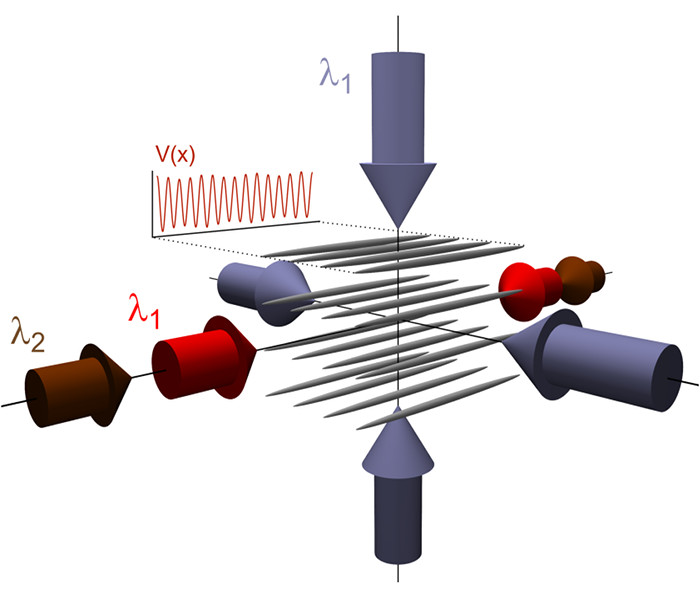 |
We use a bichromatic optical lattice to experimentally realize a disordered system of ultracold strongly interacting 87Rb bosons. In the absence of disorder, the atoms are pinned by repulsive interactions in the sites of an ideal optical crystal, forming one-dimensional Mott-insulator states. We measure the excitation spectrum of the system as a function of disorder strength and characterize its phase-coherence properties with a time-of-flight technique. Increasing disorder, we observe a broadening of the Mott-insulator resonances and the transition to a state with vanishing long-range phase coherence and a flat density of excitations, which suggest the formation of a Bose-glass phase. L. Fallani et al. |
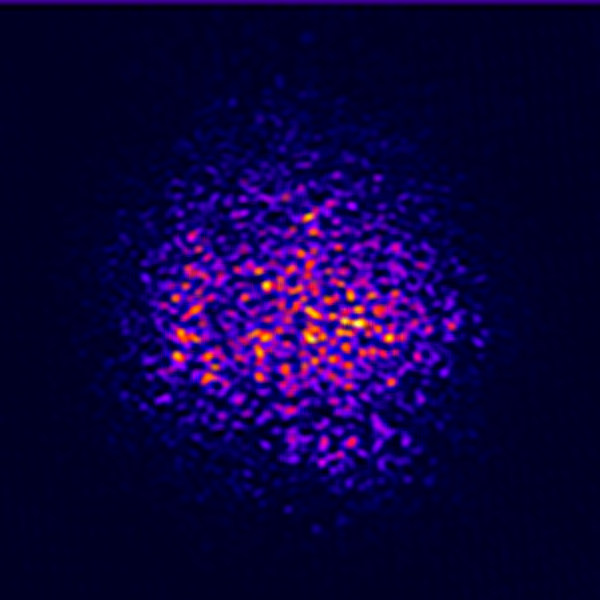 |
We have performed pioneering investigations of a Bose-Einstein condensate in a random potential, produced by shining an optical speckle pattern onto the atoms. We have investigated both static and dynamic properties of the BEC in the presence of disorder. With small levels of disorder, stripes are observed in the expanded density profile and strong damping of dipole and quadrupole oscillations is seen. By studying the propagation of the BEC in a disordered waveguide, we have evidenced a strong suppression of mass transport as the speckle potential is increased. The experimental results are in good agreement with numerical calculations based on the Gross-Pitaevskii equation. J. E. Lye et al. C. Fort et al. |
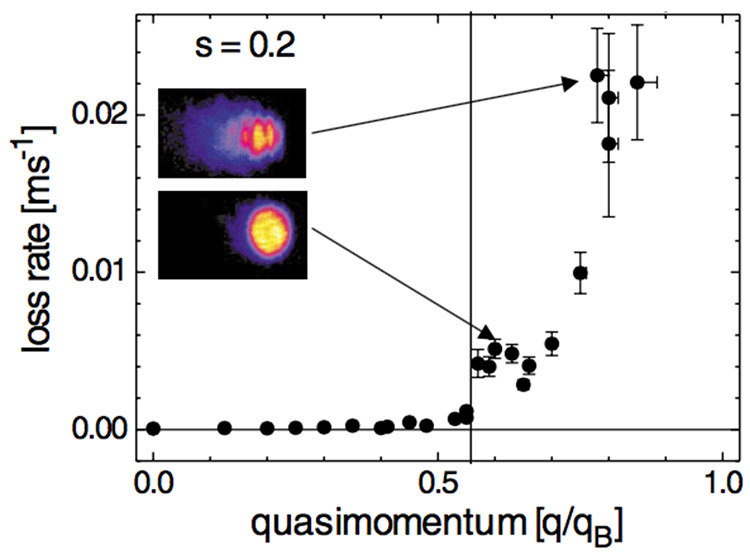 |
We have experimentally studied the unstable dynamics of a harmonically trapped Bose-Einstein condensate loaded into a 1D moving optical lattice. The lifetime of the condensate in such a potential exhibits a dramatic dependence on the quasimomentum state. This is unambiguously attributed to the onset of dynamical instability, after a comparison with the predictions of the Gross-Pitaevskii theory. Deeply in the unstable region we observe the rapid appearance of complex structures in the atomic density profile, as a consequence of the condensate phase uniformity breakdown. L. Fallani et al. |
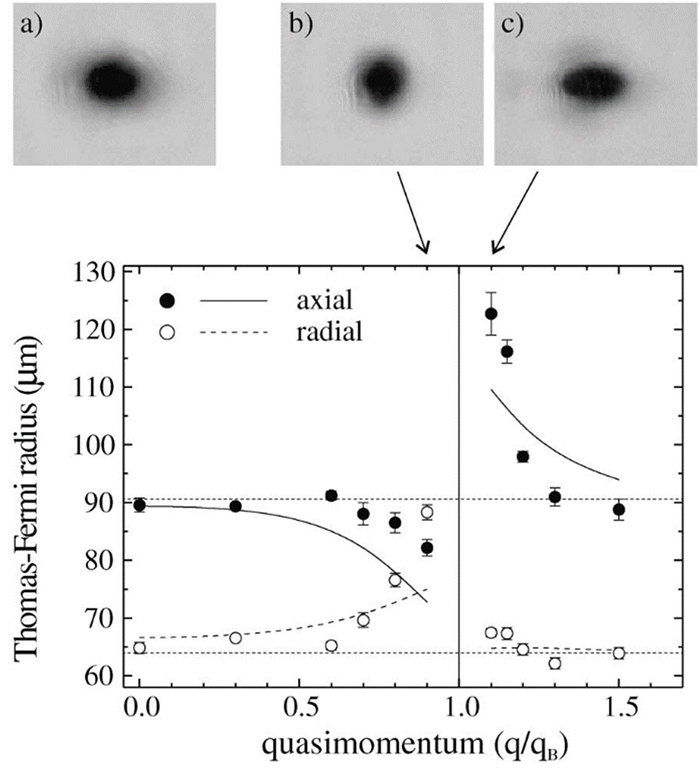 |
We report the experimental observation of a lensing effect on a Bose-Einstein condensate expanding in a moving 1D optical lattice. The effect of the periodic potential can be described by an effective mass dependent on the condensate quasimomentum. By changing the velocity of the atoms in the frame of the optical lattice, we induce a focusing of the condensate along the lattice direction. The experimental results are compared with the numerical predictions of an effective 1D theoretical model. In addition, a precise band spectroscopy of the system is carried out by looking at the real-space propagation of the atomic wave packet in the optical lattice. L. Fallani et al. |
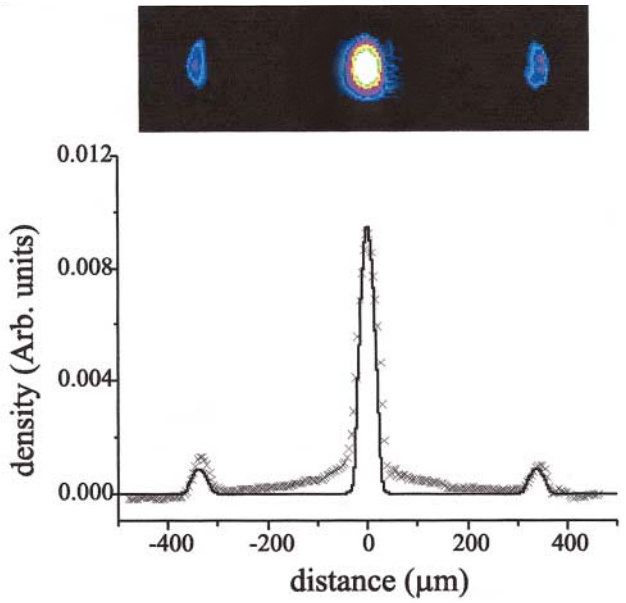 |
We investigate the properties of a coherent array containing about 200 Bose-Einstein condensates produced in a far detuned 1D optical lattice. The density profile of the gas, imaged after releasing the trap, provides information about the coherence of the ground-state wave function. The measured atomic distribution is characterized by interference peaks. The time evolution of the peaks, their relative population, as well as the radial size of the expanding cloud are in good agreement with the predictions of theory. P. Pedri et al. |
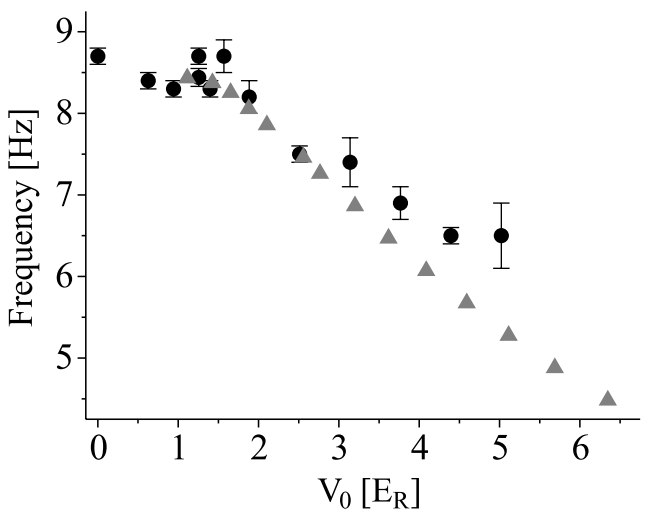 |
We report on the direct observation of an oscillating atomic current in a one-dimensional array of Josephson junctions realized with an atomic Bose-Einstein condensate. The array is created by a laser standing wave, with the condensates trapped in the valleys of the periodic potential and weakly coupled by the interwell barriers. The coherence of multiple tunneling between adjacent wells is continuously probed by atomic interference. The square of the small-amplitude oscillation frequency is proportional to the microscopic tunneling rate of each condensate through the barriers and provides a direct measurement of the Josephson critical current as a function of the intermediate barrier heights. F. S. Cataliotti et al. |


